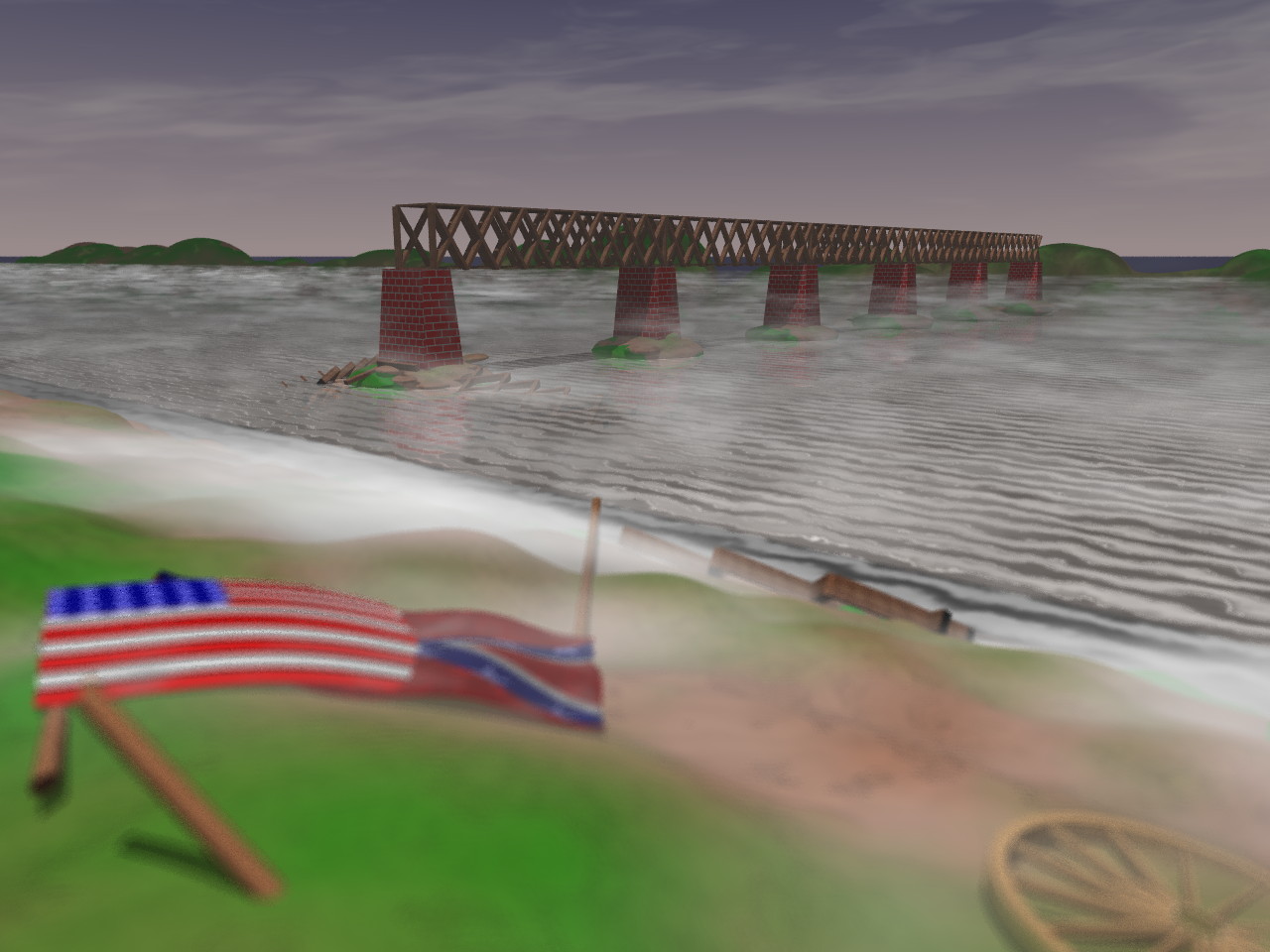When I was in Richmond, Virginia last fall (wandering from bar to bar in Northern Virginia and the Shenandoah) I stopped at Hollywood Cemetery. A number of graves had both United States and Confederate flags recently placed on them. They were those little flags you’ll get for parades, with flagpoles about 8 inches long and the flag probably three by four inches at most. The flags were lying on the ground at the graves, and in each case the US flag had a snapped pole. I found that to be an emotionally charged image.
While going through a book on the Confederacy for a book I’m writing, I ran across a picture of a picture of a bridge in Bridgeport, Tennessee, that had had both ends cleanly destroyed. It was an intact bridge that you couldn’t use to cross over from either end, because it didn’t have either end.
When the Internet Ray-Tracing Competition announced that the March/April 1999 theme would be History, I chose that as an opportunity to design this image, which I later used as the basis for the back of It Isn’t Murder If They’re Yankees, the reason I was wandering from bar to bar in Richmond, Charlottesville, and the rest of the Valley.
